ABSTRACT
Information and communication technology (ICT) is now playing a
major role to support teaching and dissemination of knowledge. Nobody can deny
that the deployment of Information technology has profoundly altered not only
the way we live and walk today but also our teaching and learning experiences.
The potential of these technologies in teaching Biology is enormous. Biology is
a practical science. Thus, high quality, appropriate biology experiments and
investigations are the key to enhanced learning, and clarification and consolidation
of theory. The quest for greater efficiency in practical biology has promoted a
huge reliance on ICT as opposed the mundane methods of conducting practical
biology. This study therefore is designed to investigate the availability and
utilization of new technologies for practical biology activities in Lagos
State, Nigeria; ascertain the availability of new technological
devices in public and private secondary schools in Lagos State; determine the
extent of utilization of new technological devices in public and private
secondary schools in Lagos State, among others. A descriptive survey design was adopted. Simple and stratified
random sampling techniques were employed to select ten schools and twenty nine
teachers. Four research questions and four hypotheses were also raised in the
study. A structured questionnaire titled “Availability and Utilization of new
Technology for Practical Biology Activities Questionnaire (AUNTPBAQ) was
designed. The result collated was analyzed using simple percentage and t-test
method of statistical analysis at 0.05 level of significance. The results
showed that the new technological devices are not adequately available in
public and private secondary schools for practical biology activities; the
private schools have more technological devices than the public schools. The
result also portrayed that lack of financial capacity, irregular power supply,
lack of teachers’ competency, etc. are some of the factors that hinder the
effective utilization of the new technologies; students’ readiness to learning
is greatly influenced by this new technology among others. Given these, some
recommendations were made which include: biology teachers should be trained and
retrained on the use of new technological devices and materials for teaching
and learning; Lagos state ministry of education should ensure that all senior
secondary schools in the state are adequately equipped with the necessary new
technological devices and materials; biology teachers should use available
resources during lessons; available resources should be maintained properly,
among others.
TABLE OF CONTENTS
Title
page i
Certification ii
Dedication iii
Acknowledgement iv
Table
of Content v
List
of Tables viii
List
of Figures ix
Abstract x
CHAPTER ONE: INTRODUCTION
1.1 Background to the study 1
1.2 Statement of the Problem 5
1.3 Purpose of the Study 5
1.4 Research Questions 6
1.5 Hypothesis 6
1.6 Scope of the Study 7
1.7 Significance of the Study 7
1.8 Operational Definition of Terms 8
CHAPTER TWO:
REVIEW OF RELATED LITERATURES
2.1 Theoretical Framework 9
2.1.1 The Technology Acceptance Model 9
2.2 General Framework (ICT in Teaching
Biology) 12
2.3 The Role of Practical Biology 13
2.4 Review on Technologies used in Practical
Biology 16
2.4.1 Virtual or e-Laboratory 16
2.4.2 Computer-Assisted Instruction (CAI) 19
2.4.3 Videos and DVDs 22
2.4.4 Projectors and CD ROMs 26
2.5 Factors Militating Against the Use of
Information Technology Communication 28
2.6 Positive Influence of Using ICT
Technology 32
CHAPTER THREE:
RESEARCH METHODOLOGY
3.1 Research Design 34
3.2 Area of the Study 34
3.3 Population of the Study (Target and
Accessible) 35
3.4 Sample and Sampling Technique 35
3.5 Research Instrument 36
3.6 Validity of the Instrument 36
3.7 Reliability of the Instrument 37
3.8 Method of Data Collection 37
3.9 Method of Data Analysis 37
CHAPTER FOUR:
DATA ANALYSIS
4.1 Introduction 38
4.2 Analysis of Students' Personal Data 38
4.3 Analysis of Teachers' Personal Data 40
4.4 Analysis of Research Questions 43
4.5 Testing of Hypotheses 48
4.6 Findings of the Study 50
CHAPTER FIVE:
DISCUSSION, CONCLUSION AND RECOMMENDATION
5.1 Discussion of Findings 52
5.2 Conclusions 56
5.3 Educational Findings 57
5.4 Recommendations 57
5.5 Limitations of the study 58
5.6 Suggestions for Further Studies 58
References 59
Appendices 70
LIST OF TABLES
Table 1: Gender of Students 38
Table 2: Distribution of Students according to
Classes 39
Table 3: Gender of Teachers 40
Table 4: Marital Status of Teachers 41
Table 5: Years of Teaching Experience of
Respondents 42
Table 6: Extent of Availability of New
Technological Devices in Public and
Private Schools
for Practical Biology Activities 43
Table 7: Extent of Utilization of the New
Technological Devices in Public and
Private School for Practical Biology
Activities 45
Table 8: Hindrances to the Utilization of New
Technologies in Public and 46
Private Schools for Practical Biology
Activities
Table 9: Influence of New Technologies on
Students' Readiness to Learning 47
Practical Biology
Table 10: Difference between the Mean Ratings of
Availability of New Technology
For Practical Biology Activities in Public and
Private Schools 48
Table 11: Difference between the Mean Responses
of Biology Teachers/ Students
In Public and Private Schools on the extent of
utilization of new
Technological Resources for Practical Biology 48
Table12: Difference between the Mean Responses
of Biology Teachers in Public
and Private
Schools on the Hindrances to the Utilization of New
Technological Resources 49
Table 13: Influence of the New Technology on
Students' Readiness to
Learning Practical Biology 50
LIST OF FIGURES
Figure 1: Theory of Reasoned Action 10
Figure 2: Davis, 1989: Original Technology
Acceptance Model 10
Figure 3: Gender Distribution of Respondents 39
Figure 4: Distribution of Students According to
Classes 40
Figure 5: Gender Distribution of Teachers 41
Figure 6: Marital Status of Teachers 42
CHAPTER ONE
1.1 Background to the study
Science has made the whole world to be
technologically complex. The panacea for achieving the great millennium goals
is embedded in science through which information and communication technology
materials are developed. In other words, ICT is an indispensable part of the
contemporary world. According to Chiadika (2012) and Oriseyi 1977.), ICT can
enhance teaching and learning through its dynamic, interactive, and engaging
content.
Information
technology communication is seen as an umbrella that includes any communication
device encompassing radio, television, cellular phones, computer and network
hardware and software satellite system as well as the various services
associated with them. (Mohammed, 2013).
National Open University of Nigeria (2009) viewed ICT as forms of
technologies that are used to record, store, process retrieve and transmit
information across the globe.
Teaching profession requires teachers who have skill
and competencies in Information and Communication Technology (ICT) to impart
adequate knowledge for creativity, skills, new ideas and high level
productivity and to bring about transformational changes in their learners.
There is need for secondary school science teachers to see ICT learning
resources as a priority area of need for integration in classroom teaching and
learning. A Shift in pedagogy with adequate understanding of ICT learning
resources for classroom management skills will provide needed solutions to
emerging societal needs for global competitiveness. World Bank (2008) acknowledges
that ICT holds the opportunity to revolutionize pedagogical methods, expand
access to quality education and improve the management of the education
systems.
Science education is a veritable tool for scientific
and technological advancement of any nation. This fact is enshrined in the
National Policy on Education (Federal Republic Of Nigeria (FRN), 2004), which
states that science education should among other things equip students to live
effectively in the modern age of science and technology. To achieve this,
resources for science and technology in teaching and learning must be
adequately provided for and judiciously utilized in educational institutions
whether primary, secondary or tertiary education respectively.
Biology as a branch of science and the prerequisite
subject for many fields of learning contributes immensely to the technological
growth of the nation. This includes medicine, forestry, agriculture,
biotechnology and nursing.
Practical activities in biology provide
opportunities for students to actually do science as opposed to learning about
science. Nzewi (2008) asserted that practical activities can be regarded as a
strategy that could be adopted to make the task of a teacher (teaching) more
real to the students as opposed to abstract theoretical presentation of facts,
principles and concepts of subject matter.
A practical work is such an integral part of secondary school science;
those who can’t access it are missing out on a major element of their science
education.
New technological devices as resources in biology
laboratory activities are redefining biology education by making it possible
for emerging disciplinary knowledge and understanding of biological processes
previously too small, large, slow or fast to be taught. ICT plays a major role in the teaching and
learning of biology and other related sciences. Knowing what and how to use
these devices is vital on the part of the teachers and students respectively.
These new technologies can be applied in various ways by teachers to store
information such as planned lessons, diagrams and pictures of objects relevant
to their teaching for retrieval when needed. The internet can be used to
explore, investigate, solve problems, interact, reason, communicate and learn
many concepts in the school curriculum. The use of these technologies
facilitate the use of various methods of teaching and balances the teaching and
learning materials thus de- emphasized the situation that is teacher centered
and theoretical. As a result, learners can no longer be viewed as empty vessels
waiting to be filled but rather as active organisms seeking meaning, the
teacher is that of a guide.
The strength of these new technological devices has
been recognized as they are found to provide students with huge quantities of
up-to-date information available for practical activities in the laboratory.
Furthermore, the utilization of these new technological resources in science
instructions makes learning of science concepts clearer to the students and
also enable them engage students in critical thinking, problem solving and
acquisition of new scientific knowledge and skills (Adeosun, O. 2010).
These new technologies available for practical
biology among others include the use of data logging, data base, the internet,
world wide web, simulations, animations,
interactive board,2D and 3D graphics, flowchart, Computer Aided
Instructions, spreadsheets, digital photographs, video players, computers,
television, multimedia projector, CD;ROMS, overhead projectors etc.
Despite the importance of biology highlighted above
to the scientific development of our nation, there has been consistent failure
in biology and other science related subjects by students undertaking West
African Senior Secondary Certificate Examination (WASSCE) (Solomon, Onyemaechi
and Ogbenyealu, 2011).
Survey from previous research work has shown
teachers’ incompetence as one of the reasons behind poor performance of
students (chiadika, Awili, and Nwabudike, 2012: Solomon I., 2011; and Osagiede,
2012). Poor performance of students in biology is greatly influenced by their
performance in practical.
The traditional resources for teaching biology and
especially practical activities are mainly textbooks, chemicals, charts,
microscope, chalkboard, flask, models, regalia etc. This method can no longer
produce skills, knowledge and competencies required to be exhibited in a 21st
century biology student. The major challenge facing secondary school biology
teachers is possessing adequate knowledge and having access to the new
technological devices and being able to utilize them in a practical biology
class (Onyegebu 2011). Other barriers that has lead to the persistence of the
traditional methods according to Ayelaagbe (2012) include: resistance to change
and negative attitude, ICT infrastructure and funding, poor maintenance
culture, low internet connectivity and Tele- density, poor power supply and low
technical expertise.
Modern technologies are not easy to grasp as
conventional ones. Teachers therefore need the opportunities to effectively use
these tools to keep abreast with technological innovations and changes. To have a meaningful understanding of rapid
growth of biological knowledge, interact and meet the demands of and challenges
of the fast technology changing world, it is imperative to try out new methods,
exchange ideas with experts and peers and refine skills that will quickly
respond to new development in the science and technology.
This study seeks to find out if these technological
devices are available and their extent of utilization.
1.2 Statement of the Problem
Nigerian students both primary and secondary have
trailed behind other African countries in scientific assessment as reported by
Akpan, B.B. (2008). Poor academic performance of science students in Biology is
worrisome. A lot has been done to improve science teaching in secondary schools
in Nigeria especially practical activities. In spite of all these, students
still perform poorly. This situation has driven researchers to embark on a
search for better methods of teaching.
Furthermore, in developing countries like Nigeria,
there are problems specific to teaching practical biology which has accounted
for failure in Biology at external examinations. Most laboratories are
underfunded with outdated equipment (Onyegebu, 2011), large class sizes,
adopting lecture style of teaching, insufficient knowledge on the part of
teacher, negative predispositions of students towards practical activities are
among difficulties experienced.
Considering these challenges, it’s imperative that
biology teachers must shift focus from the traditional methods which has
produced little or no effect to embrace opportunities presented by
technological development to enhance teaching and learning in order to
eradicate the menace of poor academic performance of students.
1.3 Purpose of the Study
The purpose of this study is to investigate the
availability and utilization of new technologies being used in practical
biology in Senior Secondary Schools in Yaba Local Government Area of Lagos
State. Specifically, the study is set to:
Ø Ascertain the availability of new technological
devices in public and private secondary schools in Lagos State.
Ø Determine the extent of utilization of new
technological devices in public and private secondary schools in Lagos State.
Ø Determine the hindrances to the utilization of new
technological devices in teaching
Ø Ascertain the influence of new technology on
students’ readiness to learning practical biology.
1.4 Research Questions
1.
To what extent
are new technological devices available in public and private schools for practical
biology activities?
2.
To what extent
are the new technological devices utilized in public and private school for
practical biology activities?
3.
What are the
hindrances to the utilization of new technological devices in public and
private schools for practical biology activities?
4.
What is the
influence of new technologies on students’ readiness to learning practical
biology?
1.5 Research Hypothesis
Ho
1: There is no significant difference between the
mean responses of biology teachers/ students in public and private schools on
availability of new technology for practical biology activities.
Ho
2: There is no significant difference between the mean
responses of biology teachers/students in public and private school on the
extent of utilization of new technological resources for practical biology.
Ho
3: There is no significant difference between the
mean responses of biology teachers in public and private school on the
hindrances to the utilization of new technological resources.
Ho
4: The new technology will not significantly influence
student’s readiness to learning practical biology.
1.6 Scope of the Study
This research work focused on availability and utilization
of new technology for biology practical activities in Yaba Local Government
Development Area of Lagos State. This research work covered all public and
private school teachers and students in Yaba Local Government Area of Lagos
State.
1.7 Significance of the Study
The rapid growth of biological knowledge is placing
it prominence among the sciences. For this reason, biologists are realizing that
their responsibilities have changed, as new technological devices are
redefining biology. The new direction now in the biology laboratory, is to make
use of these new technological devices in enriching teaching and learning
experiences for the students. This new direction has taken a wave more in
secondary schools in developed countries, where decisive and remarkable changes
have occurred in how students learn .The advent of new technology is of
extremely importance not only to scientists and their counterparts in
developing countries, but also, a society like ours facing difficult choices
about health care, biotechnology, the environment and others involving
biological issues.
The utilization of these new technological resources
will not only help in changing the ambience in the biology laboratory
classroom, but will also make concepts clearer to the students as these devices
have both visual and aural appeal; stimulate students to learn; develop reasoning skills needed to acquire and apply
new information throughout their lives. It will also foster new ways of teaching,
thereby making teaching more interesting and educative for teachers as well as
students. This study will form the bedrock for further research in this subject
area. In other words, this study will serve as an impetus for other researchers
to venture into further research in related areas.
1.8 Operational Definition of Terms
1. Public
schools: public school in this context refers to schools owned by the
Government.
2. Private schools: in this context, private schools
refer to schools owned by private individuals, churches or organizations.
3. Virtual laboratory and E-laboratory are used
interchangeably in this study to denote the new equipment and tools being used
to aid students in their learning.
Click “DOWNLOAD NOW” below to get the complete Projects
FOR QUICK HELP CHAT WITH US NOW!
+(234) 0814 780 1594
![Business Plan]() Business Plan 19
Business Plan 19
![Case study]() Case study 0
Case study 0
![Feasibility Study]() Feasibility Study 44
Feasibility Study 44
![Software License]() Software License 6
Software License 6
![Training Manual]() Training Manual 2
Training Manual 2










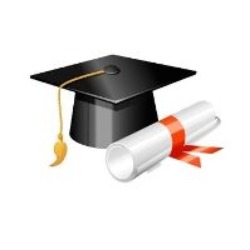








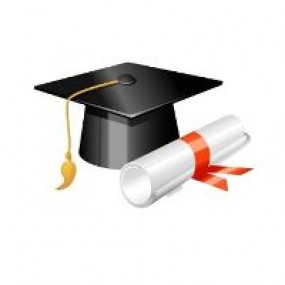

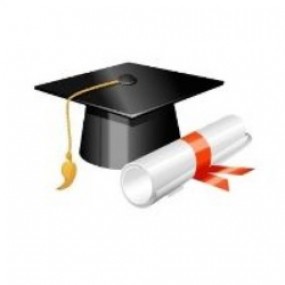
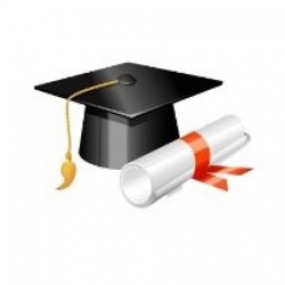
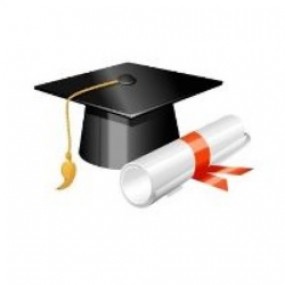
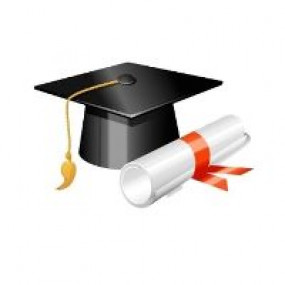
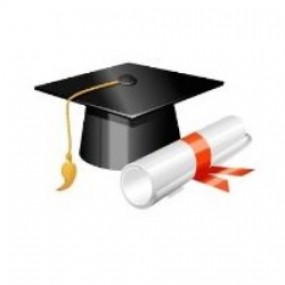
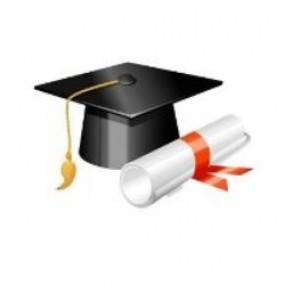

Login To Comment